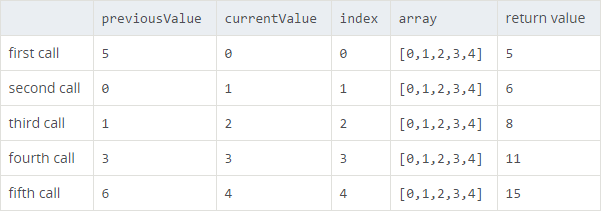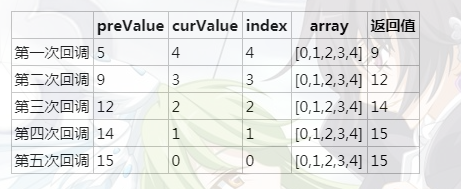个人常用:for 和 find 找对象数组,filter 删除/筛选数组元素
1.for循环
使用临时变量,将长度缓存起来,避免重复获取数组长度,当数组较大时优化效果才会比较明显。
for(j = 0,len=arr.length; j < len; j++) {
}2.foreach循环
遍历数组中的每一项,没有返回值,对原数组没有影响,不支持IE
//1 没有返回值
arr.forEach((item,index,array)=>{
//执行代码
})
//参数:value数组中的当前项, index当前项的索引, array原始数组;
//数组中有几项,那么传递进去的匿名回调函数就需要执行几次;3.map循环
有返回值,可以return出来
map的回调函数中支持return返回值;return的是啥,相当于把数组中的这一项变为啥(并不影响原来的数组,只是相当于把原数组克隆一份,把克隆的这一份的数组中的对应项改变了);
arr.map(function(value,index,array){
//do something
return XXX
})
//--------------------------------
var ary = [12,23,24,42,1];
var res = ary.map(function (item,index,ary ) {
return item*10;
})
console.log(res);//-->[120,230,240,420,10]; 原数组拷贝了一份,并进行了修改
console.log(ary);//-->[12,23,24,42,1]; 原数组并未发生变化4.forof遍历
可以正确响应break、continue和return语句
for (var value of myArray) {
console.log(value);
}5.filter遍历
filter用于对数组进行过滤。
它创建一个新数组,新数组中的元素是通过检查指定数组中符合条件的所有元素。
注意:filter()不会对空数组进行检测、不会改变原始数组
语法:Array.filter(function(currentValue, indedx, arr), thisValue)
其中,函数 function 为必须,数组中的每个元素都会执行这个函数。且如果返回值为 true,则该元素被保留;
函数的第一个参数 currentValue 也为必须,代表当前元素的值。
//实例
//返回数组nums中所有大于5的元素。
let nums = [1, 2, 3, 4, 5, 6, 7, 8, 9, 10];
let res = nums.filter((num) => {
return num > 5;
});
console.log(res); // [6, 7, 8, 9, 10]6.every遍历
every()是对数组中的每一项运行给定函数,如果该函数对每一项返回true,则返回true。
var arr = [ 1, 2, 3, 4, 5, 6 ];
console.log( arr.every( function( item, index, array ){
return item > 3;
}));
false7.some遍历
some()是对数组中每一项运行指定函数,如果该函数对任一项返回true,则返回true。
var arr = [ 1, 2, 3, 4, 5, 6 ];
console.log( arr.some( function( item, index, array ){
return item > 3;
}));
true8.reduce
reduce() 方法接收一个函数作为累加器(accumulator),数组中的每个值(从左到右)开始缩减,最终为一个值。
var total = [0,1,2,3,4].reduce((a, b)=>a + b); //10
reduce接受一个函数,函数有四个参数,分别是:上一次的值,当前值,当前值的索引,数组
[0, 1, 2, 3, 4].reduce(function(previousValue, currentValue, index, array){
return previousValue + currentValue;
});
reduce还有第二个参数,我们可以把这个参数作为第一次调用callback时的第一个参数,上面这个例子因为没有第二个参数,所以直接从数组的第二项开始,如果我们给了第二个参数为5,那么结果就是这样的:
[0, 1, 2, 3, 4].reduce(function(previousValue, currentValue, index, array){
return previousValue + currentValue;
},5);
第一次调用的previousValue的值就用传入的第二个参数代替,
9.reduceRight
reduceRight()方法的功能和reduce()功能是一样的,不同的是reduceRight()从数组的末尾向前将数组中的数组项做累加。
reduceRight()首次调用回调函数callbackfn时,prevValue 和 curValue 可以是两个值之一。如果调用 reduceRight() 时提供了 initialValue 参数,则 prevValue 等于 initialValue,curValue 等于数组中的最后一个值。如果没有提供 initialValue 参数,则 prevValue 等于数组最后一个值, curValue 等于数组中倒数第二个值。
var arr = [0,1,2,3,4];
arr.reduceRight(function (preValue,curValue,index,array) {
return preValue + curValue;
}); // 10回调将会被调用四次,每次调用的参数及返回值如下:

如果提供一个初始值initialValue为5:
var arr = [0,1,2,3,4];
arr.reduceRight(function (preValue,curValue,index,array) {
return preValue + curValue;
}, 5); // 15回调将会被调用五次,每次调用的参数及返回的值如下:

同样的,可以对一个数组求和,也可以使用reduceRight()方法:
var arr = [1,2,3,4,5,6];
console.time("ruduceRight");
Array.prototype.ruduceRightSum = function (){
for (var i = 0; i < 10000; i++) {
return this.reduceRight (function (preValue, curValue) {
return preValue + curValue;
});
}
}
arr.ruduceRightSum();
console.log('最终的值:' + arr.ruduceSum()); // 21
console.timeEnd("ruduceRight"); // 5.725ms10.find(很适合操作对象数组)
find()方法返回数组中符合测试函数条件的第一个元素。否则返回undefined
var stu = [
{
name: '张三',
gender: '男',
age: 20
},
{
name: '王小毛',
gender: '男',
age: 20
},
{
name: '李四',
gender: '男',
age: 20
}
]function getStu(element){
return element.name == '李四'
}
stu.find(getStu)
//返回结果为
//{name: "李四", gender: "男", age: 20}ES6方法
stu.find((element) => (element.name == '李四'))
11.findIndex
对于数组中的每个元素,findIndex 方法都会调用一次回调函数(采用升序索引顺序),直到有元素返回 true。只要有一个元素返回 true,findIndex 立即返回该返回 true 的元素的索引值。如果数组中没有任何元素返回 true,则 findIndex 返回 -1。
findIndex 不会改变数组对象。
[1,2,3].findIndex(function(x) { x == 2; });
// Returns an index value of 1.
[1,2,3].findIndex(x => x == 4);
// Returns an index value of -1.12.keys,values,entries
ES6 提供三个新的方法 —— entries(),keys()和values() —— 用于遍历数组。它们都返回一个遍历器对象,可以用for...of循环进行遍历,唯一的区别是keys()是对键名的遍历、values()是对键值的遍历,entries()是对键值对的遍历
for (let index of ['a', 'b'].keys()) {
console.log(index);
}
// 0
// 1
for (let elem of ['a', 'b'].values()) {
console.log(elem);
}
// 'a'
// 'b'
for (let [index, elem] of ['a', 'b'].entries()) {
console.log(index, elem);
}
// 0 "a"
// 1 "b"13、Sort()
注意数字排序和字母排序的不同写法,数字数组和对象数组都一样。
//数字类型排序
if(typeof array[0][field] === "number") {
array.sort(function(x, y) { return x[field] - y[field]});
}
//字符串类型排序
if(typeof array[0][field] === "string") {
array.sort(function(x, y) { return x[field].localeCompare(y[field])});
}